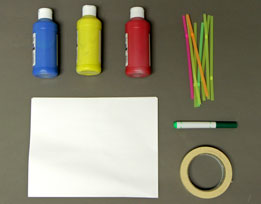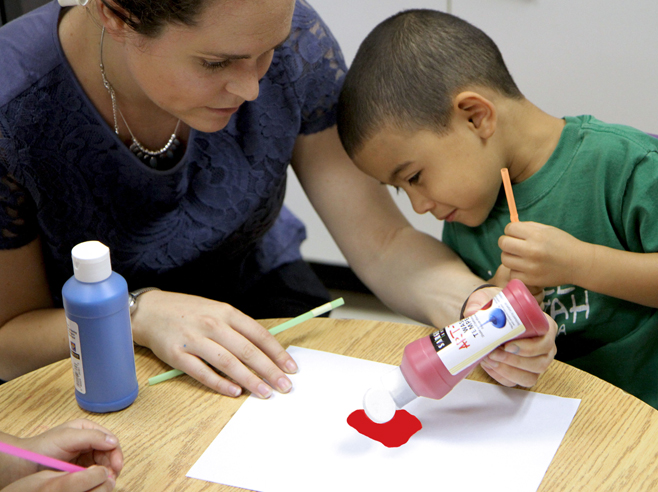Children use a straw to blow at paint puddles and make the paint move. They use big and little breaths to create paint splatter designs.
Materials

- Colored markers (for marking the masking tape)
- Masking tape
- Paper
- 1 plastic drinking straw for each child, plus extras in case straws fall on the floor or get mixed up
- Watered-down paint in squeeze bottles (or in shallow containers with a plastic spoon or pipette)
Preparation
- Mix water with paint until the paint is the consistency of milk. This will help the paint to move around the paper more easily.
- Attach a piece of masking tape near one end of each drinking straw. Either before or during the activity, label a straw for each child to use as their own.
- Note: It is important that children’s straws are marked so they recognize their own straw. Each child should use only his or her own straw during this project and recycle the straw when the project is completed.
Directions: Lesson 1
Learning Center
- Remind children that they should use only their own straw during this project. Have them recycle the straws when the project is completed.
- Show children how to place a small puddle of paint on their paper. What do you predict is going to happen when you blow at the paint through your straw? Encourage children to listen carefully to each other, expand on their classmates’ ideas, or offer alternative ideas. After children make predictions, let them try it. Possible discussion ideas:
- What happened? Were our predictions correct?
- What do you predict will happen when you blow at the paint very gently, with just a little force? What do you predict will happen when you blow at the paint hard, with a big force? Have children try it out and compare and describe the results.
- As they continue to work on their art project, adding and blowing at new puddles of paint, encourage children to talk to each other about things they discover and share new science questions they wonder about.


